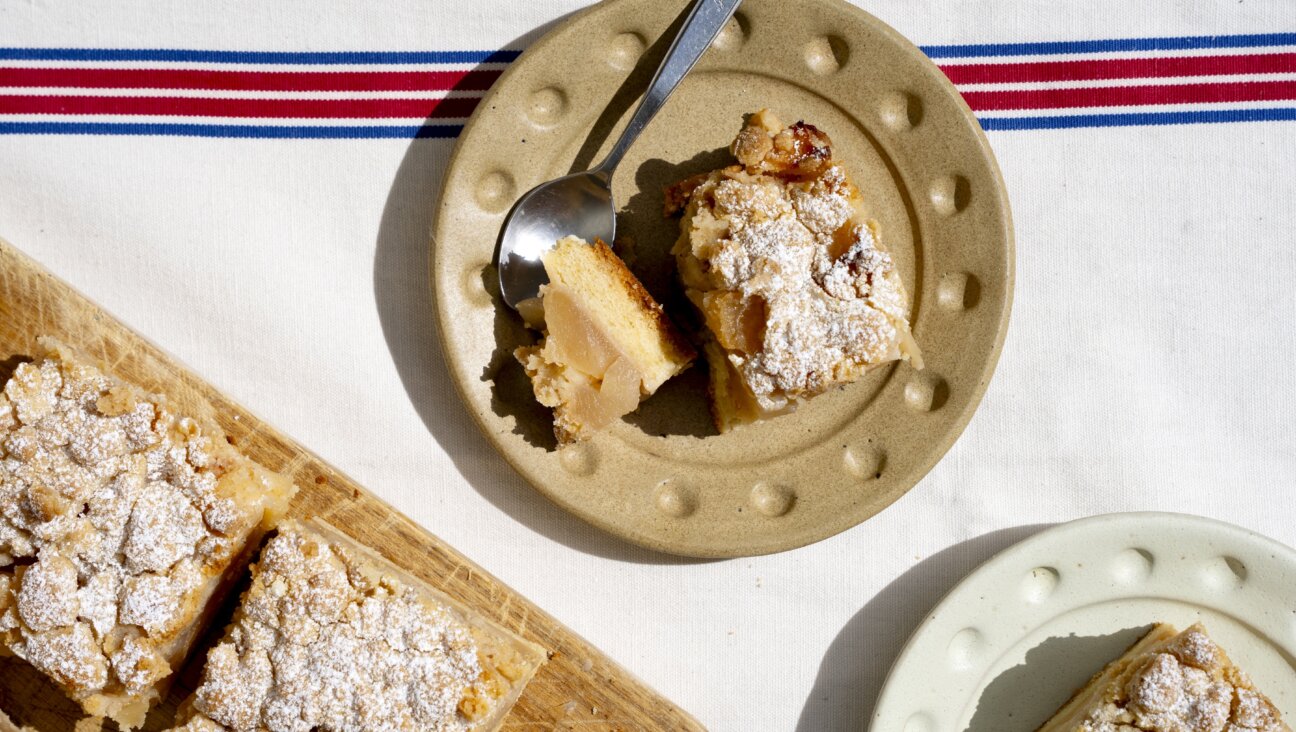Bialys With a Mission From ‘Hot Bread Kitchen’

Graphic by Angelie Zaslavsky
Sign up for Forwarding the News, our essential morning briefing with trusted, nonpartisan news and analysis, curated by Senior Writer Benyamin Cohen.
For Jessamyn Waldman Rodriguez, the bialy is the quintessential New York Jewish ethnic bread. And so the puffy onion-filled roll was one of the first recipes she developed after founding , a commercial bakery and social enterprise that she jokingly refers to as the “United Nations of bread.”
Related
Traditional Onion Bialy Recipe
You can find that bialy recipe, along with over fifty more for breads from around the world — and the foods that complement them — in “The Hot Bread Kitchen Cookbook”.
When we spoke, Rodriguez described the book as “the true manifestation of the vision that I had, a physical example of what I hope Hot Bread Kitchen is and will be.”
The volume is primarily filled with recipes, reflecting the fact that, as Rodriguez explained, “when people experience Hot Bread Kitchen, they are not always aware of the full depth of the mission and the work that we do.”
Tucked between the tortillas and flatbreads are profiles of graduates of Bakers in Training, a workforce development program that provides on-the-job artisanal bread baking training to low-income, minority and immigrant women. Interspersed with the loaves and filled doughs are business lessons gleaned from companies that the organization’s incubator has helped launch.
“The secret sauce at Hot Bread Kitchen,” Rodriguez writes in the book’s introduction, “is that the very women we train inspire the artisan breads we bake every day.”
The recipes mirror the diversity of the Hot Bread Kitchen team, with Moroccan m’smen, Persian nan-e barbari and a multitude of empanadas, as well as recipes that draw upon the founder’s own Jewish heritage: challah, matzo, gefilte fish and chicken schnitzel.

Baking is in Rodriguez's blood. Her great-grandfather (above) owned a bakery in Toronto. Image by Courtesy of Jessamyn Waldman Rodriguez
Baking is in Rodriguez’s blood: Her great-grandfather owned a bakery in Toronto, and there’s a photo of him in the cookbook, pulling rye loaves out of the large oven. His son, Rodriguez’s grandfather, would have inherited the bakery had he not developed a flour allergy — he became a stockbroker instead. When, after a career in social justice and policy, Rodriguez decided to become a baker, her grandmother exclaimed, “What are you doing? We spent generations trying to get out of the bakery. And now you’re going back to be a baker. Are you crazy?”
Family dynamics aside, Rodriguez says that she has never regretted the switch. Her passion for baking and teaching showed as we discussed the nuances of bialys.
We bonded over former New York Times restaurant critic Mimi Sheraton’s book “The Bialy Eaters,” which chronicles the author’s worldwide search for authentic bialys. “Is that not the best book?” Rodriguez asked me when I mentioned it, her voice rising with excitement.
She told me that when she moved to New York City she was fascinated by the ubiquity of the bialy, a food she described as “so Jewish yet so common that it could be found in every bodega, even though the bodega ones tend to be gross.” She continued, “When I read Mimi’s story, I thought ‘this is a bread that needs to be made.’ There’s a better recipe we can come up with, and it was a very early introduction into our product mix.”
Rodriguez and her team used Sheraton’s parameters to develop their signature bialy, resulting in a roll that’s larger, darker, crunchier and has more onion and poppy filling than its pale bodega cousin. A year after Hot Bread Kitchen started making bialys, Sheraton called to say that she liked them — the best compliment Rodriguez could ask for.
When I prepared the bialys at home, I was at first intimidated by the detailed instructions and the need to make a pâte fermentée, a simple dough also known as a pre-ferment, the night before. As I worked through the recipe, though, I found the detailed directions very clear. And that seemingly pesky pre-ferment? I learned during my discussion with Rodriguez that it’s a safety net that provides depth of flavor while helping with technical aspect of baking such as oven spring (the final burst of rising in the oven) and browning.
Apparently, most novice bread makers like myself tend to rush the process, and this step, though it is an extra one, improves the quality of the outcome by adding extra fermentation time. The proof? For the first time, my kneaded dough passed the windowpane test (see recipe) with flying colors. And my bialys were some of the best I’ve ever eaten: airy with a crisp crust and a deep well of golden onions and poppy seeds.
It’s easy to be a good student when you have a good teacher.
Gayle Squires is a food writer, recipe developer and photographer. Her blog is KosherCamembert.
















